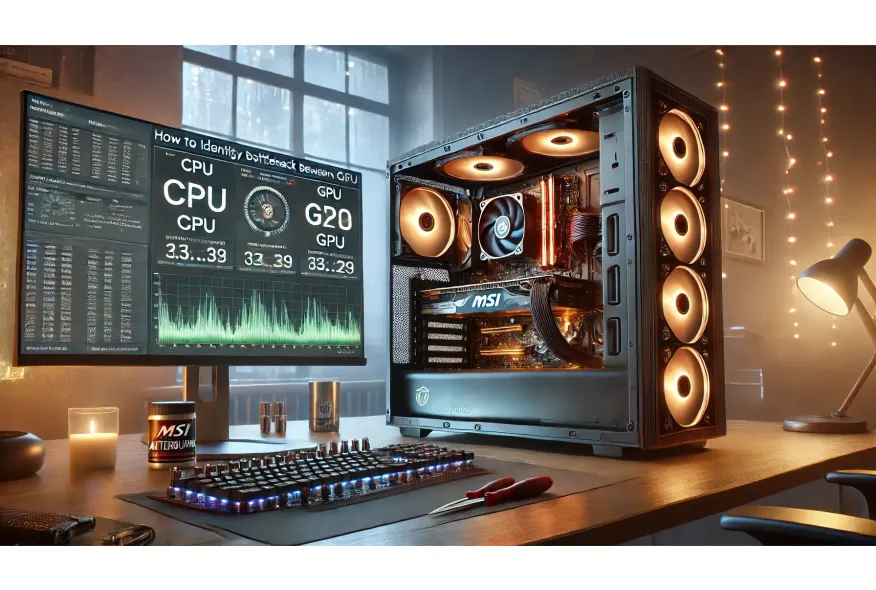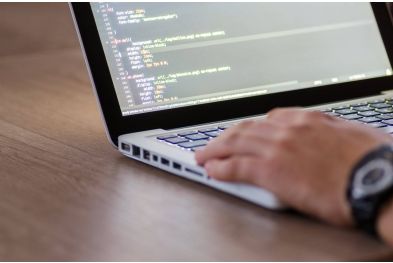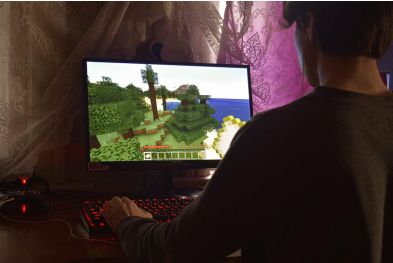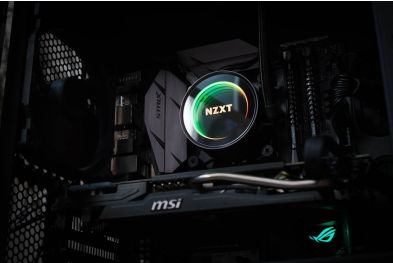How to Identify Bottleneck Between CPU and GPU
What is a Bottleneck in a Computer?
When building or upgrading a PC, one of the biggest performance challenges users face is hardware bottlenecking. This happens when one component, usually either the CPU (central processing unit) or GPU (graphics processing unit), is significantly faster or slower than the other. As a result, the faster component has to "wait" for the slower one, creating a bottleneck that limits the overall performance of your system.
Why Does Bottlenecking Matter?
Bottlenecks can severely affect gaming performance, productivity tasks, and even general computer usage. When the CPU cannot process data fast enough to keep up with the GPU (or vice versa), you may experience:
- Stuttering in games
- Lower frame rates (FPS) than expected
- Underutilized hardware (one part not working at full capacity)
Understanding which component is the weak link allows you to plan upgrades wisely or adjust settings for better balance.
Common Signs of CPU Bottleneck
A CPU bottleneck occurs when the processor is too slow to handle the workload being passed to it by the GPU. Here are common signs:
- Low GPU usage (below 90%) even in demanding games
- High CPU usage (above 90%) during gameplay
- Sudden frame drops in open-world or CPU-intensive games (simulation, strategy)
- Background processes slowing down your PC during gaming
Examples of CPU-Heavy Games
- Simulation games like Cities: Skylines
- Strategy games like Total War Series
- Online games with heavy player counts like MMORPGs
Common Signs of GPU Bottleneck
A GPU bottleneck happens when the graphics card cannot process frames fast enough, limiting performance. This is more common in high-resolution gaming (1440p or 4K) or when using ultra settings in modern games. Signs include:
- High GPU usage (close to 100%) during gameplay
- CPU usage staying low (under 50-60%)
- Smooth frame delivery in less graphically demanding games but severe drops in visually intense titles
Examples of GPU-Heavy Games
- Open-world games with detailed environments like Red Dead Redemption 2
- AAA titles with ray tracing and high-quality textures
How to Check for Bottleneck - Tools and Methods
1. Task Manager (Basic Check)
- Open Task Manager (Ctrl+Shift+Esc) while gaming.
- Monitor CPU and GPU usage.
- If CPU hits 100% while GPU is far from 100%, your CPU is bottlenecking.
- If GPU hits 100% while CPU stays low, your GPU is the bottleneck.
2. MSI Afterburner (Recommended)
- Download MSI Afterburner (free tool).
- Enable on-screen display (OSD) to see real-time CPU usage, GPU usage, temperatures, and FPS while gaming.
- Check if either CPU or GPU consistently reaches 100% before the other.
3. Bottleneck Calculators (Helpful for Planning)
- Websites like PC-Builds.com Bottleneck Calculator allow you to input your hardware and estimate potential bottleneck issues.
- Keep in mind these tools are approximate and should be combined with real-world testing.
Real-World Example Test
Imagine you’re playing Cyberpunk 2077 on a system with a Ryzen 5 3600 and a RTX 4070 at 1080p. Afterburner shows:
- CPU usage: 90-100%
- GPU usage: 50-60%
This clearly indicates a CPU bottleneck, meaning the CPU is limiting performance. In this case, upgrading to a faster CPU or reducing some CPU-intensive settings (like draw distance) can improve performance.

How to Fix CPU or GPU Bottlenecks
If You Have a CPU Bottleneck:
- Lower CPU-intensive settings: reduce crowd density, view distance, physics simulation.
- Disable background processes: close unnecessary apps.
- Consider a CPU upgrade: if you’re gaming with a budget CPU and a powerful GPU, this could be the issue.
If You Have a GPU Bottleneck:
- Lower graphical settings: reduce textures, shadows, anti-aliasing.
- Use performance-enhancing technologies: enable DLSS or FSR if supported.
- Upgrade your GPU: if your graphics card is outdated, a newer, more powerful model will help.
Ideal Hardware Balancing Tips
- Pair high-performance GPUs with equally capable CPUs. Example: RTX 4080 with Ryzen 7 7800X3D or Intel i7-13700K.
- For budget gaming, ensure your CPU can handle modern games. Example: GTX 1660 paired with Ryzen 5 5600.
- Choose components based on your resolution and target frame rate. Higher resolutions shift load toward GPU, while higher frame rates put more pressure on CPU.
Conclusion - Keep Your System Balanced
Identifying and fixing bottlenecks is crucial to maximizing your PC’s potential. Whether you’re a gamer aiming for ultra-smooth gameplay or a content creator needing stable performance, understanding the balance between CPU and GPU will help you build smarter and upgrade wisely.
Use tools like Afterburner, monitor usage, and adjust settings accordingly. And remember: a balanced system is always better than an overpowered GPU with a weak CPU or vice versa.







